
JumpStart Games, Inc., formerly Knowledge Adventure, Inc., was an American edutainment video game company based in Torrance, California. Founded in 1991, it was acquired by Chinese holding company NetDragon Websoft in 2017.
JumpStart was an educational media franchise created for children, primarily consisting of educational games. The franchise began with independent developer Fanfare Software's 1994 video game JumpStart Kindergarten. The series was expanded into other age groups and beyond games to include workbooks, direct-to-video films, mobile apps, and other media under the ownership of Knowledge Adventure, which later assumed the name JumpStart Games.
The Learning Company (TLC) was an educational software company founded in 1980 in Palo Alto, California and headquartered in Fremont, California. The company produced a grade-based line of learning software, edutainment games, and productivity tools. Its titles included the flagship series Reader Rabbit, for preschoolers through second graders, and The ClueFinders, for more advanced students. The company was also known for publishing licensed educational titles featuring characters such as Arthur, The Powerpuff Girls, SpongeBob SquarePants or Sesame Street.
Davidson & Associates, Inc. was an American developer of educational software based in Torrance, California. The company was founded in 1984 by husband-and-wife Bob and Jan Davidson, the latter of whom led the company as president until January 1997. Specializing in the production of edutainment software, the company was acquired by CUC International in February 1996 and served as the base for CUC's CUC Software division, being made responsible for the sales and distribution of the combined company.

The Miracle Piano Teaching System is educational software which uses a MIDI keyboard to teach how to play the piano. It was published in 1990 by The Software Toolworks for the Nintendo Entertainment System, Super NES, Macintosh, Amiga, Sega Genesis, and MS-DOS compatible operating systems.

The ClueFinders is an educational software series aimed at children aged 8–12 that features a group of mystery-solving teenagers. The series was created by The Learning Company as a counterpart to their Reader Rabbit series for older, elementary-aged students. The series has received praise for its balance of education and entertainment, resulting in numerous awards.
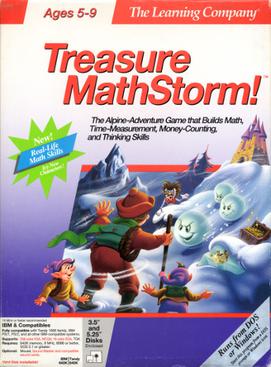
Treasure MathStorm! is an educational computer game intended to teach children ages five to nine mathematical problem solving. This sequel to Treasure Mountain! is the sixth installment of The Learning Company's Super Seekers games and the second in its "Treasure" series.

OutNumbered! is an educational video game published by The Learning Company in 1990 for both Windows and Macintosh PCs. It is aimed at children ages seven to fourteen and is designed to teach children mathematical computation and problem solving skills.

The Playroom is an educational video game published in 1989 for MS-DOS, Apple II, and Mac. The game was compatible with the TouchWindow utility. It was ported to the Amiga and FM Towns computers in 1992 and 1994 respectively and then remade for Microsoft Windows and Macintosh in 1995. It was designed for ages 3 to 6 manufactured by Broderbund. A follow-up game titled The Treehouse came in 1991 as well as a sequel to this game, called The Backyard in 1993.
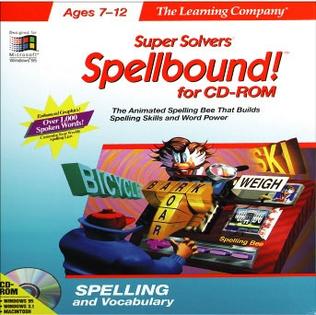
Spellbound! is an educational computer game made and distributed by The Learning Company aimed at teaching spelling, vocabulary, and language development to children ages 7 to 12 years. The objective of the game is to play spelling-related games to qualify and compete for successively higher bracket spelling bees, concluding with the player competing in the national spelling bee. The original game, released in 1991, was compatible with computers running DOS 3.3 or higher. A 1993 CD release added spoken dialogue and was compatible with Windows 95 and Mac.
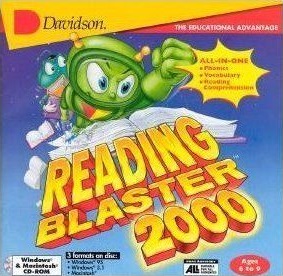
Reading Blaster 2000 is an edutainment computer game in the Blaster Learning System series released by Davidson & Associates in 1996, and is a followup to the 1994 title Reading Blaster: Invasion of the Word Snatchers. After the series development moved to Knowledge Adventure, Reading Blaster 2000 was rebranded as Reading Blaster: Ages 6–9 in 1998 and as Reading Blaster for 3rd Grade in 2000.
McGee is a series of computer games released by Lawrence Productions for Kindergarteners ages 2–4.
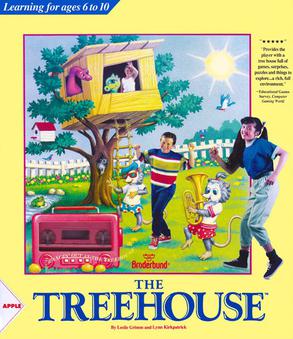
The Treehouse is an educational point-and-click personal computer game developed for DOS and then ported to Macintosh and the FM Towns, with Windows versions arriving later. Following the success of The Playroom, Broderbund created The Treehouse, which provides more content and furthers the user's ability to explore. First released in 1991, most copies were sold in educational supply stores rather than mainstream stores that sold computer software; it included a sing-along cassette tape. It was re-released in 1996 for Windows 3.1 and Windows 95. Although the Windows version has the same general activities, the characters, interface, and locations are different.
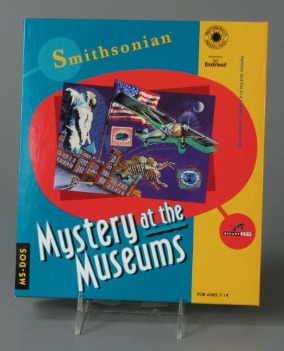
Mystery at the Museums is an educational video game developed by Binary Zoo Software and published by Artech Studios for MS-DOS in 1993. The game is Binary Zoo's second release as well as the second in their "Adventures With Edison" series.
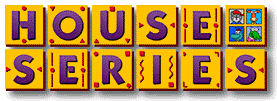
Early Learning House or simply the House Series is a collection of four main educational video games and two compilations for the Windows and Macintosh platforms, developed by Theatrix Interactive, Inc. and published by Edmark software. Each different game focuses on a particular major learning category with selectable skill settings for preschooler, kindergarten and elementary learners. Millie's Math House (1992) on mathematics, Bailey's Book House (1993) on language, Sammy's Science House (1994) on science, and Trudy's Time and Place House (1995) on history and geography. A spin-off, Stanley's Sticker Stories (1996), sees players create animated storybooks with the series' characters. Millie & Bailey Preschool and Millie & Bailey Kindergarten each contain the combined activities from two of the four software products. In addition the programs can be configured by an adult mode to suit students with special needs. Most of the activities in every game have two modes, one to allow learners to explore and try it out for themselves and the other for learners to follow specific tasks set by the game characters. Learners also have the option to print pictures of creative activities and record sounds in phonics activities. Later the games were re-developed by Houghton Mifflin Harcourt Learning Technology and re-published by The Learning Company with newer graphics and additional activities.

Math Blaster! is a 1983 educational video game, and the first entry in the "Math Blaster" series within the Blaster Learning System created by Davidson & Associates. The game was developed by former educator Jan Davidson. It would be revised and ported to newer hardware and operating systems, with enhanced versions rebranded as Math Blaster Plus! (1987), followed by New Math Blaster Plus! (1990). A full redesign was done in 1993 as Math Blaster Episode I: In Search of Spot and again in 1996 as Mega Math Blaster.

Math Blaster Jr. is a 1996 educational video game in the Blaster Learning System series aimed at teaching mathematics to children aged 4–8. The game was rebranded as Math Blaster: Ages 4-6 in 1997.

3-D Dinosaur Adventure is an educational video game by Knowledge Adventure released on CD-ROM for MS-DOS compatible operating systems in 1993. Versions for Macintosh and Windows 3.x were published in 1996. A 1997 re-release and an updated version for Macintosh and Microsoft Windows is titled 3-D Dinosaur Adventure: Anniversary Edition.
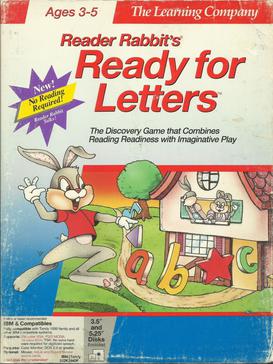
Reader Rabbit's Ready for Letters is a 1992 video game and the fifth game of the Reader Rabbit franchise. Although a spin-off title, it is designed for ages 3 to 6 to teach prereaders about becoming literate and phonics.

Math Blaster for 1st Grade is a 1999 educational video game in a line of educational products originally created by Davidson & Associates and continued by Knowledge Adventure. The game was re-released in 2000 as Math Blaster Mission 2.


















